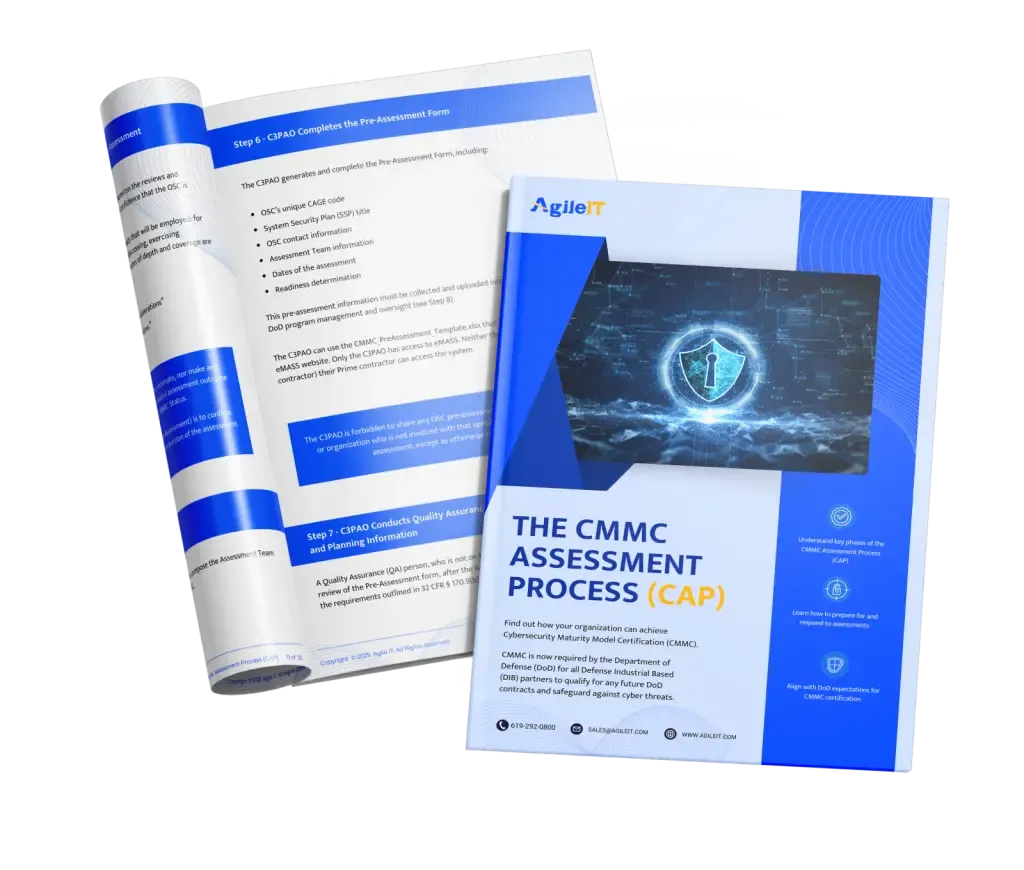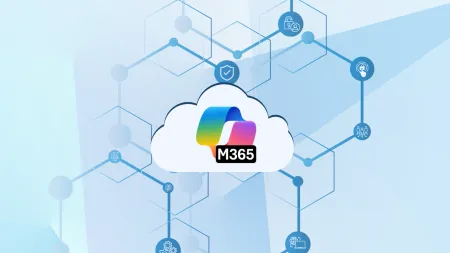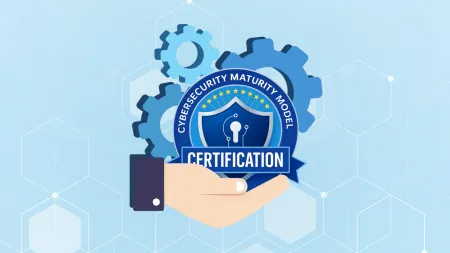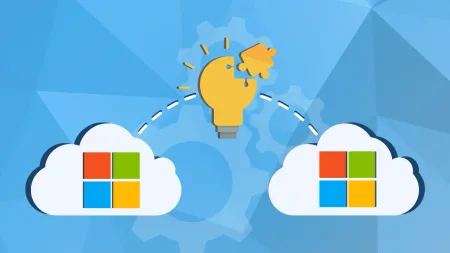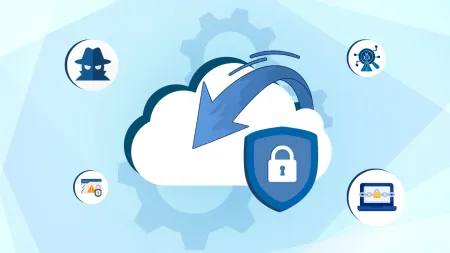CMMC Compliance — Understanding the Requirements and Why It's Important
CMMC compliance is crucial for protecting Controlled Unclassified Information (CUI) in defense contracts. Learn what CMMC is, its certification levels, and why it matters.
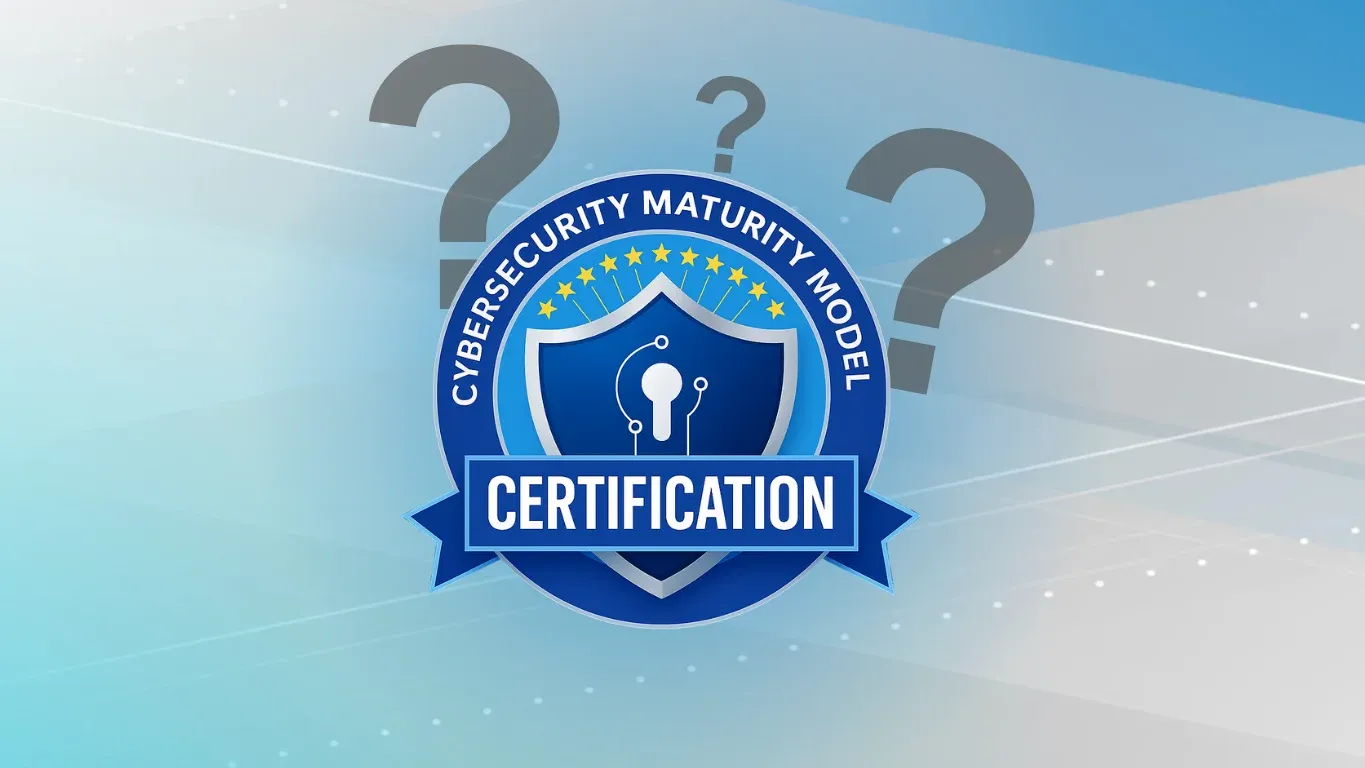
What is CMMC (2.0) - Updated with Latest Insights
Navigating the Evolving Cybersecurity Landscape: Why CMMC 2.0 is Urgent for DoD Contractors
As a defense contractor or subcontractor, you operate within a rapidly evolving cybersecurity landscape. The need to protect sensitive information, particularly Controlled Unclassified Information (CUI), has become a monumental task.
The Department of Defense (DoD) recognized this critical need and developed the Cybersecurity Maturity Model Certification (CMMC) program. CMMC is a framework designed to ensure the Defense Industrial Base (DIB) enhances its cybersecurity posture and safeguards sensitive information handled by its partners. This program serves to enforce existing Defense Federal Acquisition Regulation Supplement (DFARS) requirements, which were initially put in place to protect CUI based on standards like NIST SP 800-171.
The CMMC program has evolved, with an initial interim rule for CMMC 1.0 published in September 2020. Following internal and public review, the program was updated to CMMC 2.0 in November 2021, designed to enhance the safeguarding of sensitive information, ensure enforcement of cybersecurity standards, and improve accountability.
Here are the critical updates:
In September 2024, the rule for CMMC 2.0 moved to its “Final Rule” status.
DoD contracts are expected to begin requiring CMMC compliance starting in Q3 or Q4 2025.
Why is CMMC 2.0 important for your organization, right now?
-
32 CFR Part 170 establishes the legal framework and intent of the CMMC Program, detailing the what and why while 48 CFR (DFARS) provides the practical, contractual mechanisms for how requirements will be enforced throughout the DoD supply chain. Once 48 CFR Part 204 (the how) is finalized, CMMC Certification will be required by the Department of Defense for all DIB partners to qualify for any future DoD contracts.
-
Meeting CMMC requirements is crucial to your success as a DoD contractor or subcontractor.
-
The required CMMC level will be specified in contracts with the DoD or other contractors in the defense supply chain.
-
Without certifiable protection of sensitive data like CUI, your organization may not qualify for future DoD contracts and runs the risk of data breaches, legal penalties, and significant financial costs due to non-compliance. Losing DoD contracts due to non-compliance is a significant risk.
-
Achieving CMMC 2.0 compliance can take several months to implement. It is considered a “journey” and not an overnight accomplishment, involving potentially over 110 technical controls and 320 objectives for higher levels. This means it is urgent that DoD contractors learn about CMMC and seek assistance now to ensure they are ready when the requirement appears in contracts in late 2025.
The CMMC requirements can be complex, confusing, and challenging, and data security shouldn’t be a roadblock to your ability to serve the Department of Defense. You know you need to secure your Controlled Unclassified Information (CUI) so that you can continue doing business with the government and bid on defense contracts.
Understanding the CMMC 2.0 Framework: Levels and Requirements
The Cybersecurity Maturity Model Certification (CMMC) program is a framework developed by the Department of Defense (DoD) to ensure the protection of sensitive information handled by Defense Industrial Base (DIB) partners. It’s designed to enforce existing Defense Federal Acquisition Regulation Supplement (DFARS) requirements, which initially aimed to protect Controlled Unclassified Information (CUI) based on NIST SP 800-171 standards. CMMC 2.0, updated in November 2021, is specifically structured to safeguard sensitive information, enforce cybersecurity standards, and ensure accountability within the DIB.
CMMC 2.0 operates on a tiered model with three compliance levels:
-
Level 1 – Foundational
-
Level 2 – Advanced
-
Level 3 – Expert
The level required for your organization depends on the type of information you handle for a given contract.
Let’s break down each level’s requirements and assessment:
-
CMMC Level 1 – Foundational:
- Focus: Protecting Federal Contract Information (FCI). FCI is information not intended for public release, provided for or generated under a government contract to develop or deliver a product or service, excluding simple transactional information.
- Requirements: Encompasses basic safeguarding practices aligned to FAR Clause 52.204-21. Compliance is based on 17 practices organized within 6 domains.
- Assessment: Requires a Self-Assessment annually against clearly articulated cybersecurity standards. While you can use a third-party consultant to help with scope and preparation, this is still considered a self-assessment and does not result in certification. All DIB organizations need Level 1 compliance, even if aiming for higher levels, as Level 2 includes Level 1 requirements.
-
CMMC Level 2 – Advanced:
- Focus: Protecting Controlled Unclassified Information (CUI) in nonfederal systems and organizations. CUI is sensitive information that requires safeguarding and dissemination controls according to laws, regulations, or government-wide policies.
- Requirements: Includes all 17 practices from Level 1, plus 93 additional ones, totaling 110 practices. These 110 requirements are based on practices detailed in the CMMC Assessment Guide Level 2 and are largely aligned with the NIST SP 800-171 standard.
- Assessment: For organizations handling information critical to national security, Level 2 requires an assessment conducted every three years by a Certified Assessor from a CMMC Third-Party Assessment Organization (C3PAO) accredited by The Cyber AB. Some select programs may require annual self-assessments. To maintain Level 2 certification, a triennial assessment is required. Achieving certified status allows you to bid on defense contracts.
-
CMMC Level 3 – Expert:
- Focus: Intended for contractors involved with the most critical defense programs.
- **Requirements: Will have more than 110 practices, built upon Levels 1 and 2. These practices are based on NIST SP 800-172.
- Assessment: When fully specified and implemented, Level 3 will require government-led assessments every three years. This level is currently still undergoing definition and development.
Regardless of your organization’s size, you must be certified for the required CMMC level to ensure you have the appropriate cybersecurity measures for the information involved in associated contracts. Meeting CMMC Level 2 is expected for most DIB and higher education institutions.
Achieving CMMC 2.0 compliance is not an overnight accomplishment; it can take several months to implement, involving potentially over 110 technical controls and hundreds of objectives. It is considered a “journey”.
What Else Government Contractors Need to Know About CMMC 2.0
Now that we’ve covered the core levels and requirements of CMMC 2.0, it’s essential for government contractors within the Defense Industrial Base (DIB) to understand the broader implications and practicalities of this framework. CMMC 2.0 is more than just a checklist; it’s a fundamental shift in how cybersecurity is mandated and verified for those handling sensitive defense information.
Here are some additional critical points every government contractor should be aware of:
-
Purpose and Mandate: By 2026, CMMC will be required by the Department of Defense (DoD) for all DIB partners to qualify for future DoD contracts and to safeguard against cyber threats. Its primary goal is the protection of sensitive information, specifically Controlled Unclassified Information (CUI) and Federal Contract Information (FCI), enforcing existing Defense Federal Acquisition Regulation Supplement (DFARS) requirements, and ensuring accountability.
-
The Path to Level 2: While there are three levels, most organizations need to achieve CMMC Level 2 to qualify for defense contracts. This level, focused on protecting CUI, requires implementing 110 practices largely aligned with the NIST SP 800-171 R2 standard.
-
The Assessment Process (CAP): Compliance is verified through a structured assessment process. The official guide for Level 2 is the CMMC Assessment Process (CAP).
- Key Players: Understand the roles involved. The Affirming Official (AO) is your senior representative accountable for compliance. The C3PAO (Certified Third-Party Assessment Organization), accredited by The Cyber AB, conducts the Level 2 assessment. The Lead Certified CMMC Assessor (CCA) validates the assessment scope. Your organization (OSC) and potentially External Service Providers (ESPs) will work with the Assessment Team.
- Evidence is Key: Be prepared for the Assessment Team to require access to various evidence and artifacts to demonstrate implementation of controls.
- No Guarantees: C3PAOs are prohibited from offering guarantees or promises about assessment results.
- External Providers (ESPs vs. CSPs): This is a crucial distinction. If an External Service Provider (ESP) is within your CMMC scope and handles CUI, the Assessment Team must confirm their system meets all NIST 800-171 R2 requirements. You’ll need to provide evidence of the ESP’s FedRAMP Moderate Authorization, FedRAMP Moderate equivalency, or a Level 2 Certificate of CMMC Status. Cloud Service Providers (CSPs) generally require FedRAMP Authority to Operate (ATO) or equivalency.
- Assessment Outcomes: If all requirements are met, you’ll be recommended for a CMMC Level 2 Final Certificate. If requirements are met except those in an existing and valid Plan of Action and Milestone (POA&M) (per 32 CFR §170.21), you may receive a Conditional Certificate. Note that defense contractors do not have access to eMASS; this system is for the DoD and C3PAOs only.
-
Contractual Impact: CMMC compliance isn’t optional for future DoD work.
- Risk of Cancellation: Non-compliance with the required level could lead to your current contract being canceled.
- Subcontracting: Subcontracting and teaming procedures will likely change, with the CMMC level often applying to both prime and subcontractors.
- Early Qualification: CMMC aims to clarify requirements before bidding, letting contractors know what they are qualified for early.
- Allowable Costs: Costs associated with CMMC certification can be considered an allowable cost.
-
The “Journey” to Compliance: Achieving CMMC 2.0 compliance takes time – potentially several months. It is considered a “journey”.
- Starting Point: Begin by learning the requirements and identifying your required CMMC level. Conduct a gap analysis to see where you stand against the controls.
- Remediation Window: If your formal assessment reveals areas needing improvement, you typically have a 90-day window to address these remediation items.
- Continuous Effort: Once certified, compliance is not a one-time event. It must be continuously monitored and maintained. Level 1 requires annual self-assessment, while Levels 2 and 3 require a C3PAO or government-led assessment every three years, respectively.
-
Leveraging Technology and Expertise: Navigating the complex web of DFARS, FAR CUI, CMMC, and NIST SP 800-171 can be challenging.
- Recommended Technology: Microsoft recommends the US Sovereign Cloud, specifically Azure Government and Microsoft 365 Government (GCC High), for protecting CUI in line with CMMC Level 2 and 3 requirements. These environments offer necessary tools and security features. Eligibility validation is required for access.
- Partnering for Success: Working with an experienced Managed Service Provider (MSP for CMMC) in government compliance, like Agile IT, can provide crucial expertise, actionable insights, and support throughout the compliance and maintenance process.
Understanding these additional facets of CMMC 2.0 is vital for government contractors looking to secure and maintain their ability to work with the DoD. It underscores the need for proactive planning, robust security practices, and potentially seeking expert guidance.
Navigating the complexities of CMMC shouldn’t hold your organization back. AgileIT can help you understand the requirements, close security gaps, prepare for audits, and maintain compliance, so you’ll be ready to meet the demands of your target CMMC level. Whether you’re just starting your compliance journey or need ongoing support, we can help.
Need help with CMMC compliance? Contact AgileIT today.
